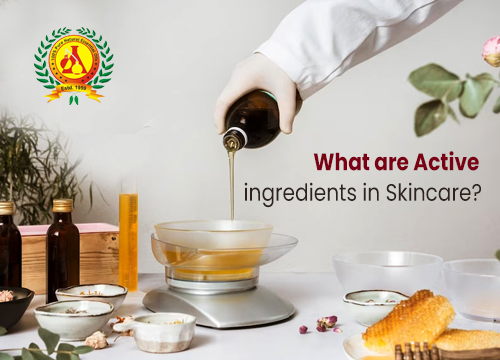You’re not alone if you’ve noticed a rise in serums with active ingredients on your Instagram feed. Since 2020, the country’s skincare market is heavily populated by both domestic Indian brands and imports from abroad. However, acids have been used in skincare products for thousands of years. Old wine, which contains tartaric and malic acids, has been used by European women to rinse their skin for centuries. Cleopatra used milk’s lactic acid to exfoliate her skin. According to the strength and molecular size of the acid, “Acids are active ingredients that address a variety of different skincare concerns,” including acne, pigmentation, clogged pores, and skin cell turnover.
Your skin type and issues should be considered before choosing an acid, as the first step in the process. It’s advisable to first see a dermatologist and then shop if you’re unsure.
also read Essential oils for summers
Is acid application safe?
Skincare products use gentle, well-balanced acids to brighten and exfoliate your skin, revealing a healthy glow. Additionally, most acids come from natural sources. Mild acids help with exfoliation and glow by working only on the skin’s surface. Most of them don’t actually “peel” your skin, and most don’t even require downtime.
Glycolic acid
A well-known AHA (alpha hydroxy acid), glycolic acid helps with pigmentation, exfoliation, and has anti-aging properties. It can be used on all skin types and is frequently found in toners, cleansers, serums, and exfoliators.
Lactic Acid
All skin types, even sensitive skin types, should consider using this AHA because it is one of the milder ones. It hydrates, exfoliates, and brightens skin.
Salicylic acid
Salicylic acid, a BHA (beta hydroxy acid), is an effective anti-acne ingredient because it controls sebum production, exfoliates the skin, and reduces oil production. If you have acne-prone skin, you can use it once a day or once every few days.”
Antioxidant rich acids
Ferulic acid, the most popular form of vitamin C, and ascorbic acid are excellent antioxidants that fight free radical damage, which is caused when unstable molecules within the skin harm healthy cells, and they also help with pigmentation, fine lines, hydration, and other skin concerns.
Poly Hydroxy Acids (PHAs)
PHAs with a milder exfoliating action, such as lactobionic acid and gluconolactone, are beneficial for those with extremely sensitive skin. They also have advantages, like moisturizing and smoothing the skin.
hyaluronic Acid
It is well known for its hydrating qualities. Some fantastic products that combine hyaluronic acid with ascorbic acid and other ingredients can treat a variety of skin types and issues.
It is advantageous for people with dry skin or mature skin because it can carry 1000 times its weight in water.
usage and power
Depending on the acid and product, the majority of at-home skincare products contain between 0.01% and 30% of alcohol. For a beginner, I would advise using softer acids and lower strengths.
Hyaluronic acid can be used in both your morning and evening routines because, unlike most acids, it doesn’t make your skin sensitive to the sun. 1-2% is the ideal strength.
Despite the fact that AHAs (glycolic and lactic acid) brighten and exfoliate the skin, they also make it more susceptible to the sun’s rays, so I would advise against using them during the day. Less than 8% should be the ideal strength.
Salicylic acid, also known as BHAs, are more potent than AHAs and make your skin more sensitive to sunlight. Avoid using them during the day. Formulas with 1% to 2% concentration should be avoided. Start with a cleanser that you will wash off if you are hesitant to use a BHA.
Ferulic and ascorbic acids can be used in the morning and at night because they are not overly photosensitive. The concentrations can range from 2 to 20%, and they are frequently combined with each other or other antioxidants.
PHAs (lactobionic and gluconolactone acids) range from 2-8%. It’s likely that you have sensitive skin if a PHA is advised when you’re just starting out. In that case, I would advise starting with a percentage as low as 2% and using it twice or three times per week.
The secret to pairing acids is to combine exfoliating ones with hydrating blends. Make sure both exfoliating acids you use, if you use two, are mild to avoid overdrying your skin. As a general rule, avoid combining retinol, BHAs, and AHAs.
When used together, these exfoliating ingredients could be harsh on the skin. Stronger or “deeper” acids can effectively exfoliate skin and treat conditions like acne scars and pigmentation. However, this necessitates urgent medical oversight.
Now that you have all the information you need about acids, there are a few significant things to remember. Always test an acid on a small area first, wait 2-3 days before using acids for facial treatments, and never use at-home formulas to replace professional ones.


